Vaccination Strategies for Optimal Sheep Health
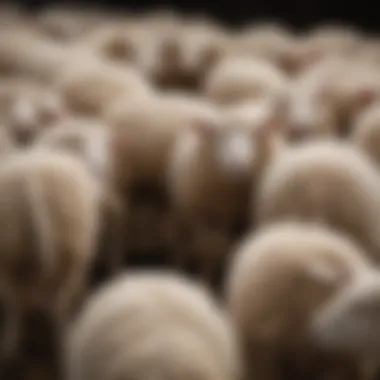
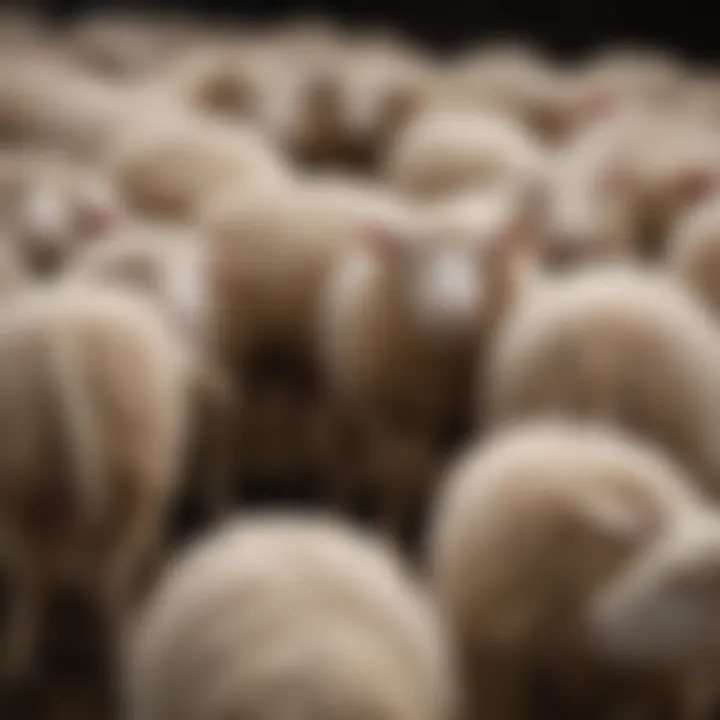
Intro
Vaccination plays a pivotal role in maintaining the health and productivity of sheep flocks. As diseases threaten not only individual animals but also entire herds, effective vaccination strategies become essential. Farmers, veterinarians, and researchers alike must understand the nuances involved in selecting and administering vaccines. This article explores the intricate layers of vaccination in sheep, outlining various vaccine types, administration techniques, and disease implications for overall health.
Overview of Research Topic
Brief Background and Context
Historically, sheep have been susceptible to numerous infectious diseases which can lead to severe economic losses in the agricultural sector. Vaccination emerged as a crucial strategy to combat these diseases. This overview sheds light on how scientific research has shaped current vaccination practices, informing farmers about the best approaches to prevention and disease management.
Importance in Current Scientific Landscape
Vaccination strategies are at the forefront of animal health research. Advances in science provide veterans with new tools and insights, ensuring that vaccination programs adapt to emerging threats. The current scientific landscape stresses the need for evidence-based practices. This ensures that sheep farmers can make informed decisions based on empirical data, thereby optimizing herd immunity in their flocks.
Methodology
Research Design and Approach
A systematic review approach is adopted to collate existing knowledge on sheep vaccination. The focus is on peer-reviewed studies, clinical trials, and expert opinions. This comprehensive analysis allows for a better understanding of different vaccination strategies and their effectiveness.
Data Collection Techniques
Data is gathered from various sources including academic journals, veterinary practices, and agricultural extension services. Observational studies offer direct insights into field practices, while meta-analyses present a broader picture of vaccine efficacy.
Overall, this synthesis of information lays the groundwork for developing effective vaccination strategies that enhance flock health and productivity. The importance of vaccination in sheep farming extends beyond individual health, impacting the sustainability of agricultural practices and the economy.
Prelude to Vaccination in Sheep
Vaccination plays a crucial role in the sheep farming industry. It not only helps in preventing diseases but also ensures the overall health and productivity of the flock. Proper vaccination strategies can lead to enhanced wool production, better meat quality, and improved reproductive performance. Consequently, understanding vaccine types, administration methods, and potential vaccination challenges is essential for sheep farmers and veterinary professionals alike.
Importance of Vaccination
Vaccination serves several purposes in ovine health management. Firstly, it mitigates the risk of infectious diseases that can devastate entire flocks. Such diseases can lead to severe economic losses and affect animal welfare. By vaccinating sheep, farmers create a protective barrier against outbreaks, ensuring that their livestock remains healthy.
Additionally, vaccination promotes herd immunity, which is vital for controlling transmissible diseases. When a sufficient proportion of the flock is vaccinated, the spread of pathogens is reduced, ultimately protecting even those animals that are unvaccinated. This collective immunity can be crucial in maintaining the overall health of sheep in a farm.
Moreover, vaccinated sheep often exhibit better growth rates and higher reproductive success. This leads to increased productivity, benefiting farmers financially. The advantages extend beyond mere financial implications; vaccinated sheep are more resilient and have a reduced chance of developing chronic health issues. Thus, vaccinations are an investment in long-term flock health and productivity.
Overview of Major Diseases
Understanding the diseases that vaccinations target is essential for effective sheep health management. Major diseases in sheep include clostridial infections, foot and mouth disease, blue tongue virus, and caseous lymphadenitis, among others.
- Clostridial Infections: caused by multiple bacterial species, these infections often lead to sudden death in sheep, making vaccinations critical.
- Foot and Mouth Disease: this is a viral infection that primarily affects livestock and can spread rapidly. Vaccination is the key method to prevent this disease.
- Blue Tongue Virus: transmitted by insects, this viral disease significantly affects sheep, causing swelling and fever. Vaccines help in controlling outbreaks effectively.
- Caseous Lymphadenitis: Another bacterial infection, which is chronic and leads to severe economic losses due to reduced wool quality and weight gain.
Proper vaccination not only helps in preventing these diseases but also plays a critical role in the economic viability of sheep farming. Recognizing the significance of vaccination creates a foundation for understanding more complex vaccination strategies and technologies.
Types of Vaccines Used in Ovine Health
Vaccination is a cornerstone of ovine health management. Understanding the different types of vaccines is crucial for sheep farmers, veterinarians, and anyone involved in livestock management. Each type of vaccine has distinct characteristics, benefits, and considerations that can significantly impact overall flock health and productivity.
Inactivated Vaccines
Inactivated vaccines contain pathogens that have been killed or inactivated so they can no longer cause disease. They stimulate an immune response without the risk of causing illness. These vaccines are generally safe and can be stored in a stable form, making them convenient for use in various conditions.
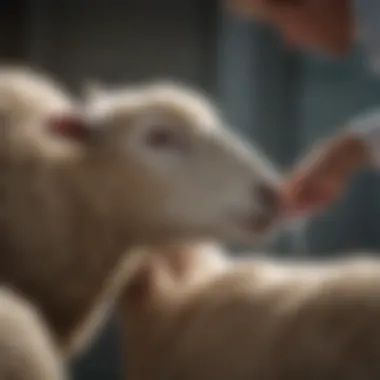
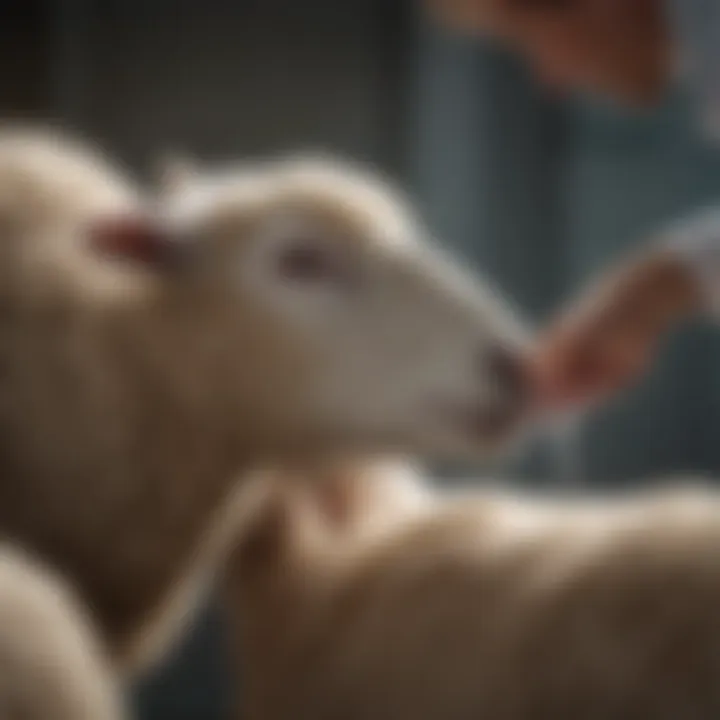
The main advantage of inactivated vaccines is their reliability. Once administered, they often provide a strong immune response that can last for several years, although booster shots may be necessary to maintain immunity over time. Common examples in sheep include vaccines for clostridial diseases.
However, there are limitations. Inactivated vaccines may not produce as robust a cell-mediated immune response compared to other types, which could be crucial for certain diseases. Thus, they are typically more effective when paired with adjuvants that enhance the immune response.
Live Attenuated Vaccines
Live attenuated vaccines use weakened forms of pathogens. Because these pathogens can replicate in the host, they tend to generate a strong and long-lasting immune response. This type of vaccine is often used for diseases where a significant and durable immune reaction is necessary, such as foot and mouth disease.
A significant benefit of live attenuated vaccines is their capacity to induce broad immunity, including cell-mediated immunity. This can lead to better protection against subsequent infections. However, care must be taken when administering these vaccines, as there is a potential risk of the disease manifesting, particularly in immunocompromised animals.
Moreover, they often require precise storage conditions and can be more expensive to produce. Farmers need to weigh these aspects when considering their use.
Subunit Vaccines
Subunit vaccines contain only specific parts of the pathogen, such as proteins or sugars. They are designed to stimulate a specific immune response without introducing live pathogens. This makes subunit vaccines generally considered safer than live vaccines.
While subunit vaccines can be effective in eliciting an immune response, they usually require the inclusion of adjuvants to enhance their effectiveness. These vaccines offer flexibility and can be tailored to target specific diseases such as blue tongue virus effectively. However, their production can be complex and often more expensive than inactivated vaccines.
DNA Vaccines
DNA vaccines are a novel approach involving the introduction of DNA that encodes for a particular antigen. These vaccines prompt the host cells to produce proteins that stimulate an immune response. DNA vaccines are still relatively new in veterinary medicine, but research indicates they have significant potential for use in sheep.
One primary advantage is the ease of production and storage. DNA vaccines do not require strict refrigeration, which can facilitate their distribution, especially in remote areas. Moreover, they are safe since they cannot cause disease. However, more studies are necessary to comprehensively understand their effectiveness in field conditions.
In sum, understanding the various types of vaccines used in ovine health is essential. Each vaccine type has unique properties, benefits, and challenges. Selecting an appropriate vaccination strategy can enhance the health of sheep and improve farm productivity.
Vaccination Schedules for Sheep
Vaccination schedules are essential for ensuring the health and productivity of sheep flocks. An effective schedule not only minimizes the risk of disease outbreaks but also optimizes overall herd immunity. The importance of organized vaccination strategies cannot be overstated. They provide a clear framework for managing the health of sheep, ultimately impacting farm profitability and animal welfare. When tailored correctly, these schedules align with the biological needs of the animals, addressing vulnerabilities based on age, breed, and environmental conditions.
Recommended Vaccination Timeline
The vaccination timeline typically follows a set pattern, particularly during the lambing season and critical growth periods. For lambs, it is recommended to start vaccinations at around two to three months of age. The primary vaccines often include those for clostridial diseases and possibly others depending on regional disease prevalence.
Here is an outline of a recommended timeline:
- 2-3 Months: Initial vaccination for lambs, often including clostridial vaccines.
- 4-6 Months: Booster dose, especially if there is a risk of exposure to specific diseases.
- Ewe Vaccination Prior to Lambing: Pregnant ewes should receive vaccines to pass immunity to lambs through colostrum, especially for clostridial diseases.
- Annual Booster Vaccinations: All adult sheep should receive annual boosters to maintain immunity levels.
"A well-planned vaccination schedule is vital for the success of sheep management practices."
This timeline can be modified based on veterinary advice and specific health concerns prevalent in the area. Keeping accurate records of vaccinations performed is crucial for effective herd management.
Factors Affecting Vaccination Timing
Several factors can influence vaccination timing. Understanding these elements is crucial for farmers and veterinarians to develop effective vaccination plans.
- Age of the Sheep: Younger animals may require more frequent vaccinations than adults due to their developing immune systems.
- Health and Nutrition: A well-nourished sheep is more responsive to vaccines. Poor health or nutrition can impair vaccine efficacy.
- Environmental Conditions: Seasonal outbreaks or regional disease prevalence may necessitate adjusted vaccination schedules. For example, if a particular virus is rampant in the winter months, timing should account for that.
- Previous Vaccination History: Knowledge of prior vaccination can impact future schedules. For instance, if a ewe has had regular vaccinations, her lambs may initially have adequate immunity.
- Local Regulations and Recommendations: Different regions may have specific guidelines or requirements regarding vaccination. Keeping in touch with local veterinary services is advisable.
Methods of Vaccine Administration
Vaccine administration is a crucial aspect of ovine health management, influencing the efficacy of vaccines and the overall health and productivity of sheep. Selecting the right method can significantly affect the immune response in sheep. Each method has its own set of benefits, considerations, and practical applications that farmers and veterinarians must be familiar with.
The choice of administration route impacts the absorption of the vaccine and the subsequent immune response. For instance, some methods may provide rapid immunity, while others ensure longer-lasting responses. Hence, understanding different vaccine administration methods allows for optimization in disease prevention strategies. This segment covers the three primary methods: intramuscular injection, subcutaneous injection, and oral vaccination techniques.
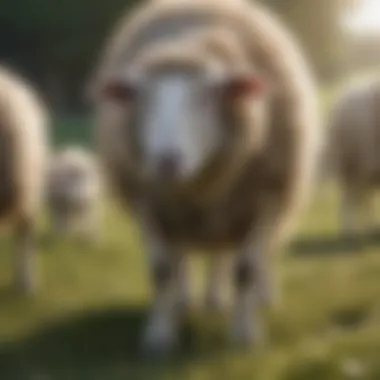
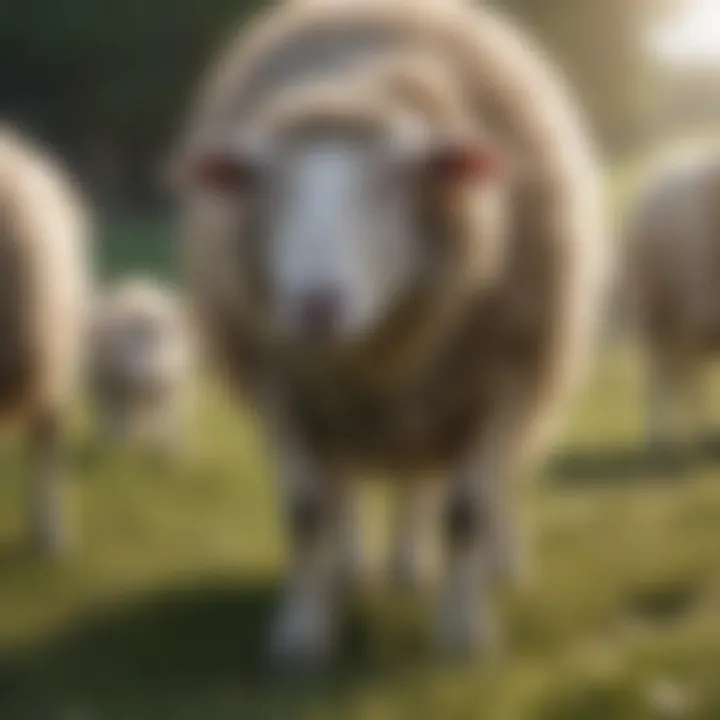
Intramuscular Injection
Intramuscular injection is one of the most common methods for administering vaccines in sheep. This technique involves injecting the vaccine directly into the muscle, typically in the neck or hindquarters. One key advantage of intramuscular injection is the larger volume of vaccine that can be administered compared to other routes. This allows for combination vaccines, which can protect against multiple diseases simultaneously.
The muscles have a good blood supply, which means the vaccine is quickly absorbed into the system. This leads to a rapid immune response, making it particularly effective for vaccines that require prompt action. Farmers should be aware, however, that improper technique may lead to muscle damage or injection site infections. Therefore, proper training and hygiene during administration are essential to mitigate risks.
Subcutaneous Injection
Subcutaneous injection involves administering the vaccine beneath the skin. This method is less invasive than intramuscular injection and carries a lower risk of complications. Vaccines delivered through this route are usually absorbed slower compared to the intramuscular route, making them suitable for vaccines designed for longer-lasting immunity.
Choosing the right site for subcutaneous injection is important, generally the loose skin behind the shoulder is preferred. Subcutaneous administration has the added benefit of causing less pain and stress to the sheep, producing a more favorable response during vaccination. It is essential for farmers to maintain proper records of the sites used to ensure that the same site is not reused too frequently, which can cause irritation or complications.
Oral Vaccination Techniques
Oral vaccination techniques represent an alternative method of delivering vaccines. This approach is less commonly used but offers unique advantages. Oral vaccines are generally administered through feed or water, allowing for mass vaccination of large groups with less handling anxiety for the animals. This method can also reduce the risk of injury or infection associated with needle use.
The effectiveness of oral vaccines relies on the animal's ability to absorb the vaccine through the digestive tract. This means that the formulation of the vaccine must be designed specifically for oral administration to ensure it survives the acidic environment of the stomach.
Oral vaccinations can also facilitate the inclusion of other health supplements or medications, creating a more holistic approach to flock health. Nevertheless, the uptake of the vaccine could be variable among individual sheep if not all animals consume the same amount of feed or water, leading to potential gaps in immunity.
Understanding these methods of vaccine administration helps farmers make informed decisions about best practices for sheep health management.
Common Ovine Diseases Prevented by Vaccination
Vaccination plays a pivotal role in sheep farming, particularly in the prevention of diseases that can severely compromise both animal welfare and the economic viability of farms. Common ovine diseases, if left untreated, can lead to significant health issues, reduced productivity, and even mortality. Through targeted vaccination strategies, farmers can mitigate the risk posed by these diseases, ultimately safeguarding their flock's health and boosting productivity. It is vital that sheep farmers understand these diseases, their impacts, and the vaccination methods available to counteract them.
Clostridial Infections
Clostridial infections are caused by bacteria from the genus Clostridium. These infections can lead to a range of severe health problems in sheep, including enterotoxemia, tetanus, and malignant edema. Clostridium perfringens type D, for instance, can cause rapid death in young lambs due to overeating or sudden changes in diet.
Vaccination against clostridial infections is crucial. Vaccines are typically administered to ewes before lambing and to lambs soon after birth. This strategy helps establish passive immunity in lambs through colostrum. Effective vaccination can significantly reduce mortality rates and improve overall herd health, underscoring its importance in any vaccination program.
Foot and Mouth Disease
Foot and Mouth Disease (FMD) is a highly contagious viral disease that affects cloven-hoofed animals. While sheep are less susceptible than other livestock, they can still carry and transmit the virus, complicating control efforts. FMD can lead to lesions in the mouth and on the feet of infected animals, causing pain and reducing feed intake, which directly affects growth rates and productivity.
Vaccination against FMD is a key component in regions where the disease is prevalent. Vaccines help control outbreaks and maintain herd immunity. Regular vaccination schedules and biosecurity measures are necessary to prevent FMD's spread. Moreover, international trade in sheep products often requires proof of vaccination, making it economically advantageous for farmers.
Blue Tongue Virus
The Blue Tongue Virus (BTV) is transmitted by biting midges and can lead to significant health issues in sheep, including fever, swelling of the face, and respiratory distress. Infected sheep often exhibit oral ulceration and lameness due to painful lesions.
Whole-virion vaccines against BTV have been developed, and their use is crucial in endemic areas. Vaccination can reduce the clinical signs of the disease and lower viral shedding, thus minimizing further transmission among the flock. In areas where BTV is present, vaccination is not just advisable but necessary for maintaining sheep health.
Caseous Lymphadenitis
Caseous Lymphadenitis (CL) is an infectious disease caused by Corynebacterium pseudotuberculosis. It leads to abscess formation in lymph nodes, which can reduce wool quality and weight gain, significantly impacting farm profitability. While vaccination does not completely prevent the disease, it can reduce the incidence and severity of abscesses.
Vaccines against CL can provide sheep with some level of immunization. Apart from vaccination, good management practices and regular veterinary check-ups are essential for controlling the spread of CL within a flock. Farmers need to be vigilant and proactive to mitigate the overall impact of this disease.
"Effective vaccination is a cornerstone of modern sheep husbandry, crucial for optimizing flock health and economic returns."
In summary, vaccines are a vital tool in preventing common ovine diseases. Clostridial infections, Foot and Mouth Disease, Blue Tongue Virus, and Caseous Lymphadenitis represent some of the major threats to sheep health. Understanding these threats and employing effective vaccination strategies not only enhances the well-being of individual animals but also the prosperity of sheep farming overall.
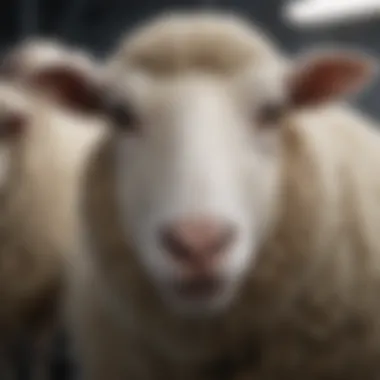
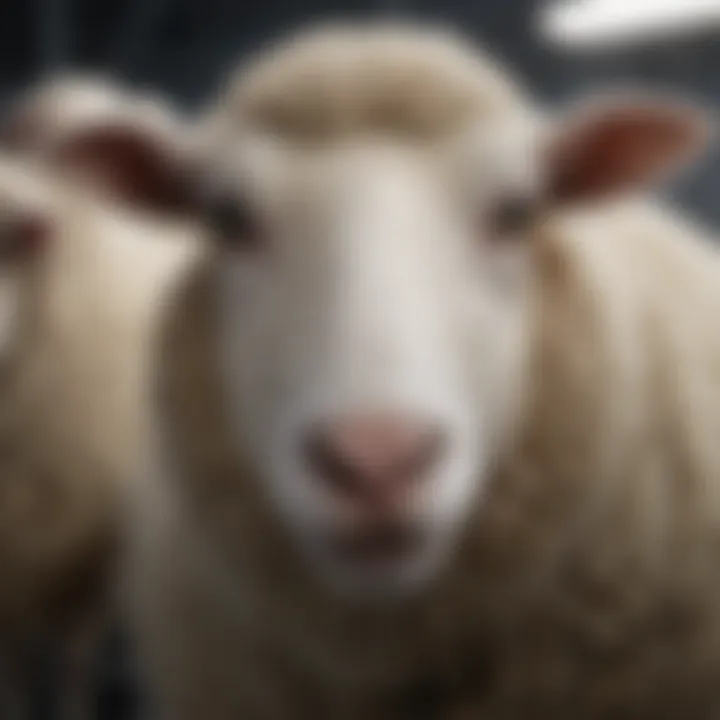
Emerging Vaccination Technologies
Emerging vaccination technologies play a crucial role in advancing sheep health management. As the field of veterinary science evolves, it is essential to explore novel methods that enhance the efficacy of vaccines and address various challenges faced by sheep farmers. Innovations in vaccine development not only promise improved protection against diseases but also aim to contribute significantly to the overall productivity of sheep farming operations.
Novel Vaccine Development
Novel vaccine development focuses on creating new formulations that can provide better immunity and longer-lasting protection. Traditional vaccines, while effective, sometimes fail to offer comprehensive solutions against rapidly evolving pathogens. New approaches such as recombinant DNA vaccines and nanoparticle-based vaccines are gaining traction in the field. These technologies allow for a more targeted immune response, minimizing the risk of adverse side effects that may occur with conventional vaccines.
Research into these new types of vaccines has shown promising results. For instance, recombinant vaccines can be tailored to include specific antigens from disease-causing agents, enhancing the sheep's immune response. This specificity can lead to less frequent vaccinations, which is a significant benefit for farmers looking to streamline their vaccination programs. Moreover, using alternative delivery methods, such as intranasal or oral routes, can improve ease of administration, making it simpler to vaccinate entire flocks effectively.
Personalized Vaccination Approaches
Personalized vaccination approaches represent a significant shift in the way health management is conducted within sheep farming. This strategy involves assessing the individual needs of sheep based on their health status, age, and susceptibility to specific diseases. By tailoring vaccination protocols for individual animals, farmers can achieve better health outcomes and reduce the overall risk of disease outbreaks in their flocks.
The adoption of technology such as genetic analysis and health monitoring systems allows farmers to make informed decisions regarding vaccination. For example, sheep that are more genetically predisposed to certain maladies may require a different vaccination regimen compared to others. This personalized method not only improves efficacy but also optimizes resource allocation, ensuring that vaccines are used where they are most needed.
Challenges in Ovine Vaccination
Vaccination in sheep is crucial for enhancing herd health and productivity. However, it is not without its challenges. Understanding these issues is vital for both farmers and veterinary professionals. This section delves into several key challenges facing ovine vaccination, shedding light on vaccine efficacy, logistical hurdles, and public perception.
Vaccine Efficacy Issues
Efficacy is a primary concern when discussing vaccines for sheep. Even the most well-designed vaccines can have variable success rates due to several factors. The immune response of individual sheep can differ widely. Factors such as age, health status, and even genetic makeup can play significant roles in how effectively a sheep responds to vaccination.
Additionally, the timing of vaccination can impact its success. An improperly timed vaccination might lead to reduced immunity or even vaccine failure. It is important for sheep farmers to regularly consult with their veterinarians to ensure that vaccines are administered according to the recommended schedules. Moreover, the emergence of new strains of pathogens can lead to reduced vaccine effectiveness, necessitating ongoing research and development in this area.
Logistical Challenges in Vaccine Delivery
Effective vaccine delivery is another major challenge in ovine vaccination. Factors such as storage, transportation, and administration can hinder the vaccination process. Vaccines often require specific storage conditions, such as refrigeration, to maintain their effectiveness. In rural areas or places with limited access to reliable refrigeration, this can become difficult.
Furthermore, the logistics of transporting vaccines to farms must be considered. Farmers need access to these vaccines when required, but delays can occur due to distribution issues. In many cases, farmers must coordinate with veterinarians or suppliers, which can complicate the process. The administration method also presents challenges, especially if the sheep are difficult to handle. Ensuring that all sheep in a flock receive their vaccinations can be a daunting task.
Public Perception and Acceptance
The perception of vaccination within the farming community also poses a significant challenge. Some farmers may underestimate the importance of vaccines or have concerns about their potential side effects. Misinformation, often propagated through social media or misleading sources, can contribute to vaccine hesitancy.
Education plays a crucial role in addressing these perceptions. By providing accurate information and demonstrating the benefits of vaccinations—such as disease prevention and enhanced productivity—farmers can make informed decisions. Community outreach and engagement efforts should focus on transparent communication to build trust among sheep farmers. Involving veterinarians in these discussions can also help reinforce the importance of vaccinations.
"Continual education about the benefits of vaccination can significantly improve public perception and ultimately enhance livestock health."
The End and Recommendations
In exploring the vaccination strategies for sheep, it becomes evident how critical these practices are for both livestock health and agricultural productivity. Vaccination not only provides a barrier against various diseases but also emphasizes the importance of coordinated health management in farming. This final section synthesizes the key insights garnered throughout the article, offering a clear pathway for effective vaccination.
Summary of Key Points
The vaccination landscape for sheep is multifaceted, demanding an understanding of diverse vaccine types, administration methods, and scheduling. Here are main points discussed:
- Importance of Vaccination: Vaccination is crucial in preventing diseases that can lead to economic losses and animal suffering.
- Types of Vaccines: Different vaccines like inactivated, live attenuated, and subunit vaccines play unique roles in sheep health.
- Vaccination Schedules: Adhering to recommended timelines maximizes immunity and reduces the risk of disease outbreaks.
- Administration Techniques: Selecting the appropriate method of vaccine delivery is vital for efficacy. Methods include intramuscular, subcutaneous, and oral techniques.
- Emerging Technologies: Continuous advancements in vaccine development can enhance the agility of responses to emerging diseases.
- Challenges: Addressing vaccine efficacy issues, logistical hurdles, and public perception are essential for the successful implementation of vaccination strategies.
Implementing these strategies, farmers and veterinary professionals can ensure not only the well-being of the flock but also contribute to the sustainability of the farming practice.
Future Directions in Sheep Vaccination Research
The future of sheep vaccination practices holds exciting potential. Ongoing research will play a pivotal role in shaping better strategies and tools for disease prevention.
- Novel Vaccine Development: Continued research is needed to formulate vaccines that are more targeted, with the ability to respond efficiently to emerging diseases. This may include the use of genetic technologies and recombinant DNA vaccines.
- Personalized Vaccination Approaches: Tailoring vaccination programs to the specific needs of different flocks is a promising area. Understanding genetic diversity and disease susceptibility in populations can lead to more efficacious vaccination strategies.
- Integrated Health Management: Future research should also focus on integrative approaches that combine vaccination with other health management strategies. This may result in a more holistic care model that ensures better health outcomes for sheep.
The journey towards optimized vaccination strategies in sheep is ongoing. By being adaptive to changes in health threats and technological capabilities, the sheep industry can ensure a healthier future for livestock and improved economic outcomes for farmers.



